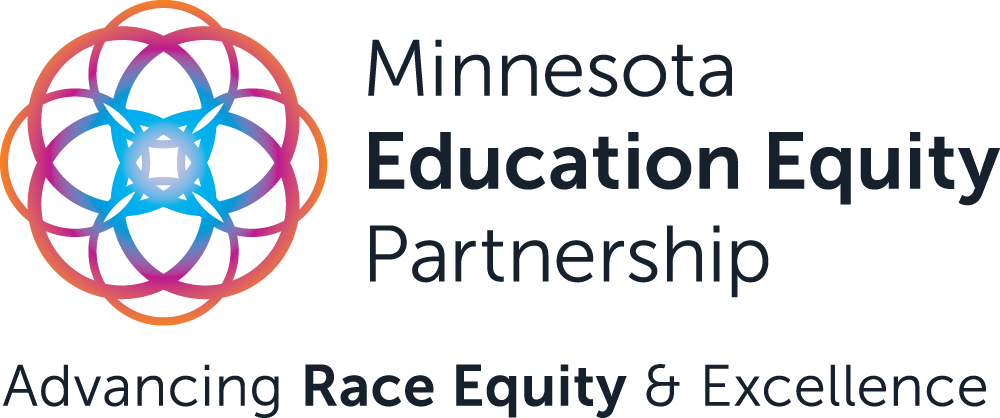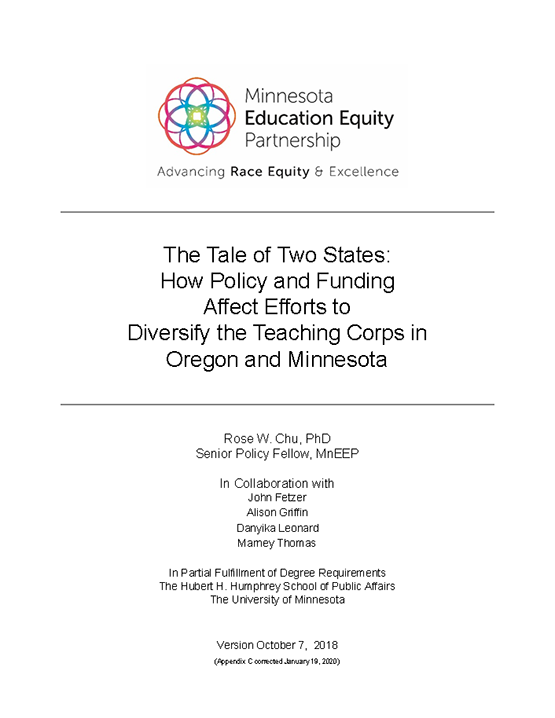The Tale of Two States 2018: How Policy and Funding Affect Efforts to Diversify the Teaching Corps in Oregon and Minnesota
Approximately 96 percent of Minnesota K12 teachers identify as white. They are teaching a much more diverse student population: 31 percent of Minnesota’s K12 students identify as students of color or American Indian. The disproportionately white teaching corps limits the potential of students of color and American Indian students who see fewer role models during their formative years; it limits the ability of school districts to incorporate more culturallysensitive practices into classrooms; and it limits the exposure of white students to teachers who do not look like them and often have different backgrounds.
Minnesota Education Equity Partnership (MnEEP) requested the Humphrey School of Public Affairs Capstone team in the Master’s of Public Affairs program to analyze this issue and compare Minnesota’s efforts with those in Oregon, which has made much greater progress in expanding teachers of color/American Indian teachers (TOCAIT) as a share of the state’s teaching corps.
The Capstone team conducted a policy scan of both states, reviewing documents and interviewing content experts to answer the following questions: How does Minnesota’s policy efforts for recruiting and retaining TOCAIT compare to policy efforts in Oregon? And how has Minnesota distributed legislative funding for TOCAIT efforts across the teacher career phases of Explore, Become, Grow, and Thrive?
Four key differences were uncovered between Minnesota and Oregon in their approaches to expanding the diversity of the teaching corps: aspiration, accountability, consistency, and investment. The study also found that Minnesota has focused almost exclusively on enrolling students into teacher preparation programs, thereby limiting its TOCAIT efforts around recruitment, retention, and mentorship.

